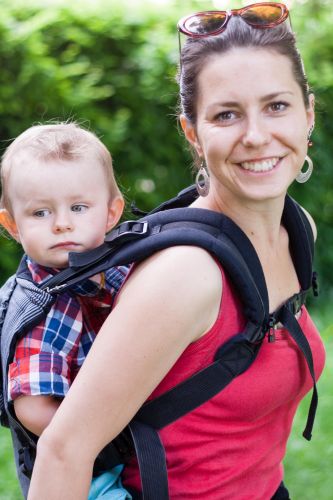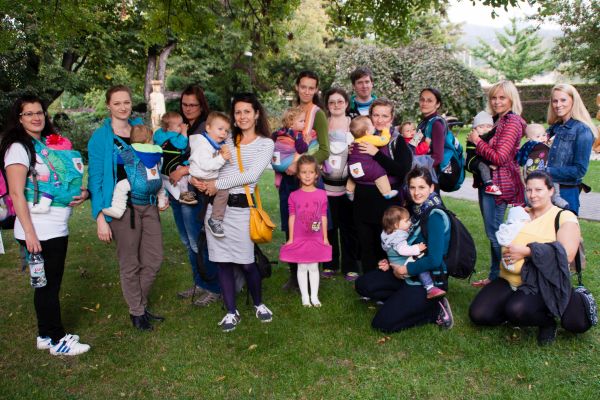Many people associate carrying children in scarves (babywearing) with primitive African tribes or ‘alternative biomoms’ and only see it as a trend that will go away in time. In truth, our grandmothers and great-grandmothers also used to carry their children in cloths or sheets. This technique used to be very common but it has almost vanished after the introduction of strollers. Nowadays, it’s gaining popularity among modern moms because it allows them to be in close contact with their babies.
The magic of scarves
You can start ‘wearing’ your baby in a scarf from the moment they’re born because the technique stimulates the position the baby used to have in your belly. The baby will feel you close and be calmer. Starting early will be better for you, too, because your muscles and joints will naturally adjust to the increasing weight of the baby. Katarína Hulínová is one of the moms who discovered the magic of scarves and she now works as a babywearing consultant. “I discovered babywearing while I was pregnant and began to read about the various kinds of childcare. I knew a few people that carried their children like this and I decided that I wanted to try it, too. I never even considered buying a stroller, I was looking at scarves and carriers,” she says. Wrapped in a scarf, Katarína’s son slept 3 hours without waking up. She enjoys to go on walks into the woods, so she sometimes changes the scarf for a carrier.

Look for a babywearing consultant
When her son was a year and a half, Katarína attended a course for babywearing consultants so she could help other moms that would like to try it. She offers individual advice and also leads a support group in the Fantázia Family Center (Rodinné centrum fantázia) near DK Púchov. “The advice I give is mainly about the basic rules of babywearing, such as the correct position for the baby in a scarf or carrier, the correct way to tie a scarf, and mental support. Every mom is different, they all need help with different things,” she says. Moms that think they don’t need any help and want to do it alone should at least look at guides on the internet. There are many tips on how to properly place a baby into a scarf or carrier so that it’s in an ergonomic position. “When I was starting out, I was also unsure whether or not my technique is right. I didn’t go to a course, I just knew that I want to do it. Having someone help you and tell you that you’re doing it right is a very good feeling,” Katarína says, remembering her beginnings without outside help.
Second-hand scarves are as good as new
If you’re afraid that babywearing and the supplies will be expensive, you’re wrong. You can get a quality scarf for as little as €50. Katarína advises buying scarves that were already used before. “Babywearing scarves are made from quality materials and the more you wear them, the softer they become and the easier it gets to tie them. If you stop using your scarf or you want to replace it with a new one, you can usually sell the old for a fair price. I don’t think babywearing is expensive. After all, it helps you be in contact with your baby, which is something you can’t put a price on,” she says.

Carrying babies in a scarf:
- simulates the position the baby used to have in their mom’s belly,
- is pleasant for the child,
- is good for children who stretch their back too much in a stroller,
- helps children with balance and movement,
- builds a better connection between parents and their babies,
- is a good basis if you want to try the Communication Elimination Method.
International Babywearing Week
Babywearing is great, especially for parents who live an active lifestyle and don’t want to give it up after their baby is born. Experts are denying the myths that claim babywearing can damage a baby’s spine. It’s the exact opposite, actually. A well-tied scarf helps support the baby’s back and protects their vertebrae from pressure. Since 2008, International Babywearing Week is held every October. If you’re interested in babywearing, try to get some information about what this week means for your town.